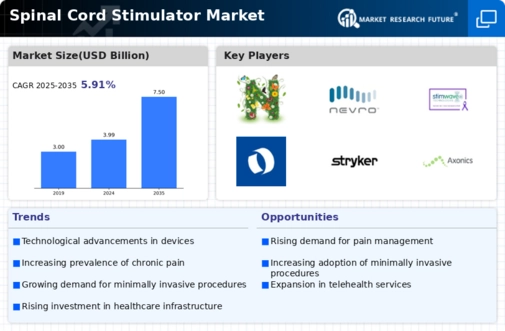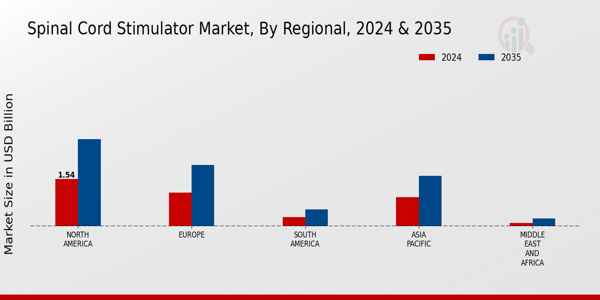Market Analysis
In-depth Analysis of Spinal Cord Stimulator Market Industry Landscape
The market for spinal cord stimulators (SCS) is in driving technological (innovation) which is being driven by a combination of components developing a brand new world. Chronic pain, growing in prevalence, such as neuropathic pain and failed back surgery syndrome, are primary contributors to this market. With an aging world population and altered lifestyles as contributing factors, the occurrence of chronic pain incidents is increasing. This results in a higher demand for considerable pain management treatments which should be as less invasive as possible and curative.
The Technical Advances in the Spinal Cord Stimulation Technology constitute a significant factor to be considered in the Market Development. SCS device technologies have developed from simple methods to modern sensing, programmable devices, and electronic systems, which make them only more precise and alert for pain to certain areas. Recently the growth in battery design which is rechargeable, enhanced electrodes and programming proficiency, lead to the evolving usage of spinal cord stimulators. The market currently is undergoing a paradigm shift which embraces the high frequency and burst waveform stimulation, providing impatiens with more choices for painless regulation and better outcomes.
The partnerships of and collbaions between medical device manufacturers and medical institutions are the main factors that growth activity of the spinal cord stimulator market. These partnerships enhance the background for initiating research and development projects, which result in fabricating next-generation SCS technologies. Notwithstanding, teaming with pain clinics and healthcare service providers would be essential for introducing spinal cord stimulator solutions to many people. Resulting from the collaboration between different industries and health care institutions, patients suffering from chronic pain can be treated better with the aspirations of meeting with their changing needs.
While the spinal cord stimulation concept is likewise becoming increasingly popular owing to its effectiveness in the treatment of contual pain, market dynamic also account on this factor. Thus, some market economy may accept it as a valid payment while the others may disregard it. Patient education and training, involving health care professionals and patients alike, facilitate a better knowledge of spinal cord simulators, encouraging professional and individual consideration of SCS therapies as part of the overall pain relieving strategy. With awareness soar, the policies change to adjust with the spinal cord stimulator technology acceptance and adoption.
Reimbursement systems and regulatory settings hold a paramount position that are required for determining the market layout. The appropriateness of the remuneration policies in relation to the advantages of spinal cord stimulation entitles many patients for the program accessibility and affordability. Regulatory approvals, guiding principles supply a framework for SCS devices' regulation and marketing and carry the trust of both health providers and the public. The market solution will, therefore, be in accordance with the regulatory mandates and also will work in collaboration with regulatory bodies to ensure the successful implementation of the given market entry processes.
















Leave a Comment